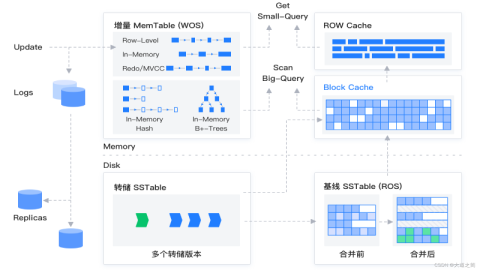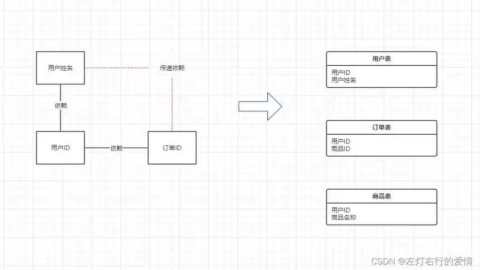转载声明:文章来源https://blog.csdn.net/zxcc1314/article/details/80918665
IO模型
1. 阻塞IO
如果数据没有准备就绪,就一直等待,直到数据准备就绪;整个进程会被阻塞。
2. 非阻塞IO
需不断询问内核是否已经准备好数据,非阻塞虽然不用等待但是一直占用CPU。
3. 多路复用IO NIO
多路复用IO,会有一个线程不断地去轮询多个socket的状态,当socket有读写事件的时候才会调用IO读写操作。
用一个线程管理多个socket,是通过selector.select()查询每个通道是否有事件到达,如果没有事件到达,则会一直阻塞在那里,因此也会带来线程阻塞问题。
4. 信号驱动IO模型
在信号驱动IO模型中,当用户发起一个IO请求操作时,会给对应的socket注册一个信号函数,线程会继续执行,当数据准备就绪的时候会给线程发送一个信号,线程接受到信号时,会在信号函数中进行IO操作。
非阻塞IO、多路复用IO、信号驱动IO都不会造成IO操作的第一步,查看数据是否准备就绪而带来的线程阻塞,但是在第二步,对数据进行拷贝都会使线程阻塞。
5. 异步IO jdk7AIO
异步IO是最理想的IO模型,当线程发出一个IO请求操作时,接着就去做自己的事情了,内核去查看数据是否准备就绪和准备就绪后对数据的拷贝,拷贝完以后内核会给线程发送一个通知说整个IO操作已经完成了,数据可以直接使用了。
同步的IO操作在第二个阶段,对数据的拷贝阶段,都会造成线程的阻塞,异步IO则不会。
异步IO在IO操作的两个阶段,都不会使线程阻塞。
Java 的 I/O 依赖于操作系统的实现。
Java NIO的工作原理

1.由一个专门的线程(Selector)来处理所有的IO事件,并负责分发。
2.事件驱动机制:事件到的时候触发,而不是同步的去监视事件。
3.线程通讯:线程之间通过 wait,notify 等方式通讯。保证每次上下文切换都是有意义的。减少无谓的线程切换。
三大基本组件
Channel
1.FileChannel, 从文件中读写数据。
2.DatagramChannel,通过UDP读写网络中的数据。
3.SocketChannel,通过TCP读写网络中的数据。
4.ServerSocketChannel,可以监听新进来的TCP连接,对每一个新进来的连接都会创建一个SocketChannel。
Java NIO 的通道类似流,但又有些不同:
1.既可以从通道中读取数据,又可以写数据到通道。但流的读写通常是单向的。
2.通道可以异步地读写。
3.通道中的数据总是要先读到一个 Buffer,或者总是要从一个 Buffer 中写入。
Buffer
关键的Buffer实现
ByteBuffer,CharBuffer,DoubleBuffer,FloatBuffer,IntBuffer,LongBuffer,ShortBuffer
Buffer两种模式、三个属性:

capacity
作为一个内存块,Buffer有一个固定的大小值,也叫“capacity”.你只能往里写capacity个byte、long,char等类型。一旦Buffer满了,需要将其清空(通过读数据或者清除数据)才能继续写数据往里写数据。
position
当你写数据到Buffer中时,position表示当前的位置。初始的position值为0.当一个byte、long等数据写到Buffer后, position会向前移动到下一个可插入数据的Buffer单元。position最大可为capacity – 1.
当读取数据时,也是从某个特定位置读。当将Buffer从写模式切换到读模式,position会被重置为0. 当从Buffer的position处读取数据时,position向前移动到下一个可读的位置。
limit
在写模式下,Buffer的limit表示你最多能往Buffer里写多少数据。 写模式下,limit等于Buffer的capacity。
当切换Buffer到读模式时, limit表示你最多能读到多少数据。因此,当切换Buffer到读模式时,limit会被设置成写模式下的position值。换句话说,你能读到之前写入的所有数据(limit被设置成已写数据的数量,这个值在写模式下就是position)
Selector
Selector(选择器)是Java NIO中能够检测一到多个NIO通道,并能够知晓通道是否为诸如读写事件做好准备的组件。这样,一个单独的线程可以管理多个channel,从而管理多个网络连接。
监听四种事件
SelectionKey.OP_CONNECTSelectionKey.OP_ACCEPTSelectionKey.OP_READSelectionKey.OP_WRITE
select()方法
select()阻塞到至少有一个通道在你注册的事件上就绪了。
select(long timeout)和select()一样,除了最长会阻塞timeout毫秒(参数)。
selectedKeys()方法
调用selector的selectedKeys()方法,访问“已选择键集(selected key set)”中的就绪通道。
NIO实现
服务端
public class NIOServerSocket {
//存储SelectionKey的队列
private static List<SelectionKey> writeQueue = new ArrayList<SelectionKey>();
private static Selector selector = null;
//添加SelectionKey到队列
public static void addWriteQueue(SelectionKey key){
synchronized (writeQueue) {
writeQueue.add(key);
//唤醒主线程
selector.wakeup();
}
}
public static void main(String[] args) throws IOException {
// 1.创建ServerSocketChannel
ServerSocketChannel serverSocketChannel = ServerSocketChannel.open();
// 2.绑定端口
serverSocketChannel.bind(new InetSocketAddress(60000));
// 3.设置为非阻塞
serverSocketChannel.configureBlocking(false);
// 4.创建通道选择器
selector = Selector.open();
/*
* 5.注册事件类型
*
* sel:通道选择器
* ops:事件类型 ==>SelectionKey:包装类,包含事件类型和通道本身。四个常量类型表示四种事件类型
* SelectionKey.OP_ACCEPT 获取报文 SelectionKey.OP_CONNECT 连接
* SelectionKey.OP_READ 读 SelectionKey.OP_WRITE 写
*/
serverSocketChannel.register(selector, SelectionKey.OP_ACCEPT);
while (true) {
System.out.println("服务器端:正在监听60000端口");
// 6.获取可用I/O通道,获得有多少可用的通道
int num = selector.select();
if (num > 0) { // 判断是否存在可用的通道
// 获得所有的keys
Set<SelectionKey> selectedKeys = selector.selectedKeys();
// 使用iterator遍历所有的keys
Iterator<SelectionKey> iterator = selectedKeys.iterator();
// 迭代遍历当前I/O通道
while (iterator.hasNext()) {
// 获得当前key
SelectionKey key = iterator.next();
// 调用iterator的remove()方法,并不是移除当前I/O通道,标识当前I/O通道已经处理。
iterator.remove();
// 判断事件类型,做对应的处理
if (key.isAcceptable()) {
ServerSocketChannel ssChannel = (ServerSocketChannel) key.channel();
SocketChannel socketChannel = ssChannel.accept();
System.out.println("处理请求:"+ socketChannel.getRemoteAddress());
// 获取客户端的数据
// 设置非阻塞状态
socketChannel.configureBlocking(false);
// 注册到selector(通道选择器)
socketChannel.register(selector, SelectionKey.OP_READ);
} else if (key.isReadable()) {
System.out.println("读事件");
//取消读事件的监控
key.cancel();
//调用读操作工具类
NIOHandler.read(key);
} else if (key.isWritable()) {
System.out.println("写事件");
//取消读事件的监控
key.cancel();
//调用写操作工具类
NIOHandler.write(key);
}
}
}else{
synchronized (writeQueue) {
while(writeQueue.size() > 0){
SelectionKey key = writeQueue.remove(0);
//注册写事件
SocketChannel channel = (SocketChannel) key.channel();
Object attachment = key.attachment();
channel.register(selector, SelectionKey.OP_WRITE,attachment);
}
}
}
}
}
}
消息处理
public class NIOHandler {
//构造线程池
private static ExecutorService executorService = Executors.newFixedThreadPool(10);
public static void read(final SelectionKey key){
//获得线程并执行
executorService.submit(new Runnable() {
@Override
public void run() {
try {
SocketChannel readChannel = (SocketChannel) key.channel();
// I/O读数据操作
ByteBuffer buffer = ByteBuffer.allocate(1024);
ByteArrayOutputStream baos = new ByteArrayOutputStream();
int len = 0;
while (true) {
buffer.clear();
len = readChannel.read(buffer);
if (len == -1) break;
buffer.flip();
while (buffer.hasRemaining()) {
baos.write(buffer.get());
}
}
System.out.println("服务器端接收到的数据:"+ new String(baos.toByteArray()));
//将数据添加到key中
key.attach(baos);
//将注册写操作添加到队列中
NIOServerSocket.addWriteQueue(key);
} catch (IOException e) {
e.printStackTrace();
}
}
});
}
public static void write(final SelectionKey key) {
//拿到线程并执行
executorService.submit(new Runnable() {
@Override
public void run() {
try {
// 写操作
SocketChannel writeChannel = (SocketChannel) key.channel();
//拿到客户端传递的数据
ByteArrayOutputStream attachment = (ByteArrayOutputStream)key.attachment();
System.out.println("客户端发送来的数据:"+new String(attachment.toByteArray()));
ByteBuffer buffer = ByteBuffer.allocate(1024);
String message = "你好,我是服务器!!";
buffer.put(message.getBytes());
buffer.flip();
writeChannel.write(buffer);
writeChannel.close();
} catch (IOException e) {
e.printStackTrace();
}
}
});
}
}
客户端
public class NIOClientSocket {
public static void main(String[] args) throws IOException {
//使用线程模拟用户 并发访问
for (int i = 0; i < 1; i++) {
new Thread(){
public void run() {
try {
//1.创建SocketChannel
SocketChannel socketChannel=SocketChannel.open();
//2.连接服务器
socketChannel.connect(new InetSocketAddress("localhost",60000));
//写数据
String msg="我是客户端"+Thread.currentThread().getId();
ByteBuffer buffer=ByteBuffer.allocate(1024);
buffer.put(msg.getBytes());
buffer.flip();
socketChannel.write(buffer);
socketChannel.shutdownOutput();
//读数据
ByteArrayOutputStream bos = new ByteArrayOutputStream();
int len = 0;
while (true) {
buffer.clear();
len = socketChannel.read(buffer);
if (len == -1)
break;
buffer.flip();
while (buffer.hasRemaining()) {
bos.write(buffer.get());
}
}
System.out.println("客户端收到:"+new String(bos.toByteArray()));
socketChannel.close();
} catch (IOException e) {
e.printStackTrace();
}
};
}.start();
}
}
}多线程NIO Tips
1,示例代码仅供学习参考。对于一个已经被监听到的事件,处理前先取消事件(SelectionKey .cancel())监控。否则selector.selectedKeys()会一直获取到该事件,但该方法比较粗暴,并且后续register会产生多个SelectionKey。推荐使用selectionKey.interestOps()改变感兴趣事件。
2.Selector.select()和Channel.register()需同步。
3.当Channel设置为非阻塞(Channel.configureBlocking(false))时,SocketChannel.read 没读到数据也会返回,返回参数等于0。
4.OP_WRITE事件,写缓冲区在绝大部分时候都是有空闲空间的,所以如果你注册了写事件,这会使得写事件一直处于就就绪,选择处理现场就会一直占用着CPU资源。
5.粘包问题。






帖子还没人回复快来抢沙发